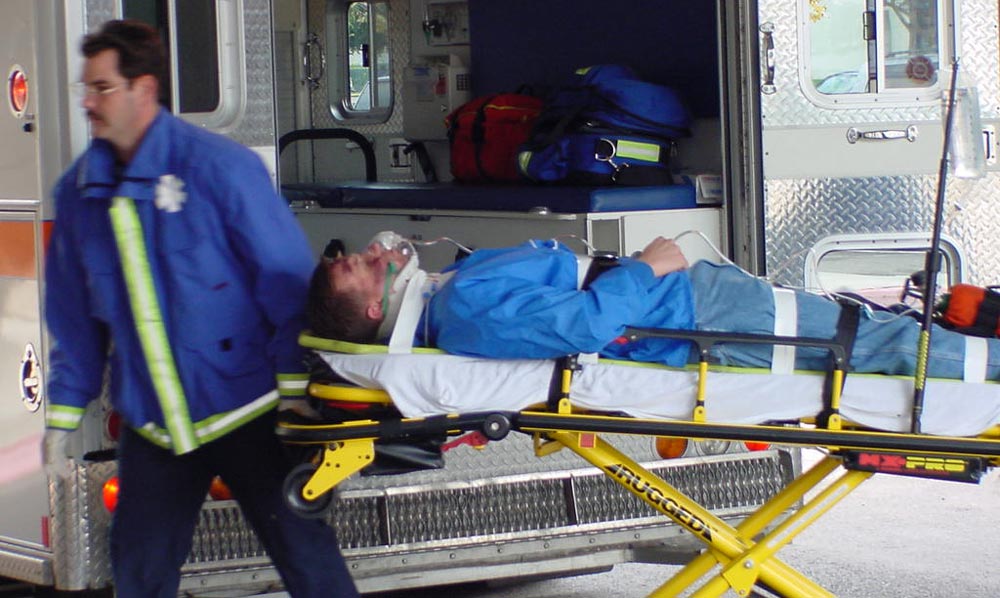Emergency Medical Technician Program
What Is An EMT?
An Emergency Medical Technicians (EMT) functions as part of a comprehensive EMS response, under medical oversight. They are medical professions who perform interventions with the basic equipment typically found on an ambulance. A certified emergency medical technician is a link from the scene to the emergency health care system.
EMT Training Program Description
Emergency Training Academy’s EMT curriculum is based on the curriculum set forth by the United States Department of Transportation.
Our course prepares students to provide pre-hospital assessment and care for patients of all ages with a variety of medical conditions and traumatic injuries. Areas of study include an introduction to emergency medical services systems, roles and responsibilities of EMTs, anatomy and physiology, medical emergencies, trauma, special considerations for working in the pre-hospital setting, and providing patient transportation. It’s a 300-hour EMT course that uses three objectives for teaching: Cognitive, Affective, and Psychomotor. To graduate as an EMT, our students must successfully pass each phase the course: didactic, hands-on training, hospital rotations, and field externship.
Program Objectives
- The student shall complete all the requirements set forth by United States Department of Transportation, National Highway Traffic Safety Administration.The student will need to have earned a minimum of 73% cumulative average prior to Final Examinations. In addition, student must Pass Written Final Examination with 73% or greater.
- The student will need to have successfully completed and passed the practical portion of the EMT Basic course, set forth by the National Registry guidelines.
- Successfully complete the required clinical and field externship rotations, including documentation requirements, set forth by ETA.
- Be competent in all the objectives of the National curriculum.
- Demonstrate and comprehend all the clinical and didactic material through a final exam and practical.
- Demonstrate good behavior throughout the course.
- Be able to assist in becoming a new entry level EMT-B by displaying a professional attitude set forth by new employers.
- Acknowledge the need for continuing education courses.

EMT Course Structure
EMB-100 - EMT Lecture
152 Clock Hours
Course Deliver: Residential
The following EMT lectures sessions are presented:
- Preparatory (Includes 4 hours Florida AIDS/HIV Education)
- Bloodborne Pathogens
- Scene Size-Up
- Patient Assessment
- Airway
- Respiratory Problems
- Cardiology Emergencies
- Medical Emergencies
- Pediatric Emergencies
- Trauma Emergencies
- Ambulance Operations
EMB-101 – EMT Lab
- Psychomotor Evaluation
- Patient Assessment
- Airway Adjuncts
- Bandage
- Spinal Immobilization
- Stair Chair
- Scoop Stretcher
- Lifting Patients
- Glucometer Operations
- Obtaining Vital Signs
- EKG Set-up
- KED
- Traction Splint
- Assisting a patient with a medication
- Medical scenarios
96 Total Clock Hours
Hospital / Clinical Externships
24 Clock Hours
Students will complete supervised hospital externship rotation(s) with a ETA Instructor in an Emergency Department (ED). This course is designed to orientate the student regarding the role an Emergency Medical Technician assumes in an Emergency Department within a hospital.
The Emergency Department rotation allows the student to perform skills learned in the classroom on actual patients. These skills include but are not limited to:
- Patient assessment
- Obtaining vital signs
- Bandaging
- Assisting doctors and nurses
- Overall patient care
- Concept of team work.
Field Externships
72 Clock Hours
Students are to complete supervised externships assigned at local Fire-rescue departments and ambulance service providers. This course is designed to introduce and establish awareness regarding the role an Emergency Medical Technician (EMT) assumes in a field setting. The rescue/ambulance rotation allows the student to perform skills learned in the classroom on actual patients. These skills include but are not limited to:
- Patient care
- Obtaining vital signs
- Immobilization
- Working in an uncontrolled environment
- Proper documentation
- Concept of team-work
Total EMT Training Hours
| Course Code | Course Title | Contact Hours | Semester Credits |
| EMB 100 | EMT Lecture | 152 | 10 |
| EMB 101 | EMT Laboratory | 52 | 1 |
| EMB 102 | EMT Externship | 96 | 2 |
| Total | 300 | 13 |

